The Literary Club
Pat Rogers, University of South Florida
April 2025
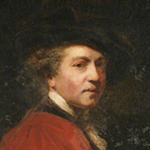
Joshua Reynolds

Samuel Johnson
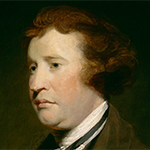
Edmund Burke
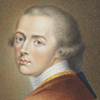
Topham Beauclerk
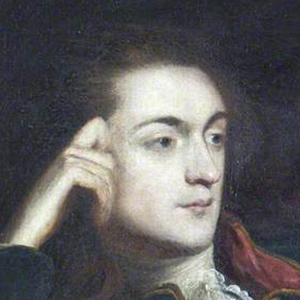
Bennet Langton
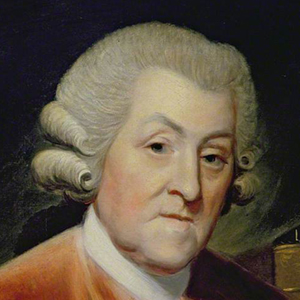
John Hawkins
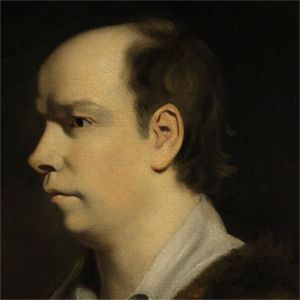
Oliver Goldsmith

Anthony Chamier
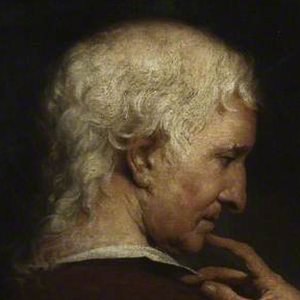
Christopher Nugent
Some misapprehensions cluster around this famous group. As for its title, the form often employed today is simply “The Club,” a designation that would have been intelligible to many contemporaries but was not in general use. It is sometimes called “Johnson’s Club,” after the individual who was at its intellectual heart and its strongest personality in an unbuttoned social setting: however, Samuel Johnson was not the key figure in its foundation. One story has it that the Irish statesman and connoisseur Lord Charlemont suggested the first idea; when Joshua Reynolds proposed the peer for membership to Johnson, he rejected the nomination saying, “No, we'll be called Charlemont’s Club.” Another variant is “The Turk’s Head Club,” from the tavern which served as the longtime venue for its meetings. The most generally accepted name is “The Literary Club,” although this too can be deceptive. A prime qualification for membership was knowledge of “literature,” meaning a philological grasp of the classics, rather than any skill in writing. As it turned out, this rule was honoured in the breach when persons who were admitted did not possess much profound scholarship regarding the ancient world. An example was the founder member Sir John Hawkins, a lawyer, biographer and historian of music, who made himself into something of a polymath despite his limited acquaintance with the desired field.
The private dining society was set up in 1764 with just nine members. It had no official aims or agenda, held no public events, produced no transactions and was entirely self-recruited. Politically its members ranged from the ultra conservative to the distinctly liberal, but a religious test was employed—no overt freethinker (such as David Hume) need apply. James Boswell gives the classic account of its inception, stating that Joshua Reynolds proposed the idea with Samuel Johnson’s support. He adds, “They met at the Turk’s head, in Gerrard-street, Soho, one evening in every week, at seven, and generally continued their conversation till a pretty late hour. This club has been gradually increased to its present number, thirty-five. After about ten years, instead of supping weekly, it was resolved to dine together once a fortnight during the meeting of Parliament.” The first dinner was held at the Turk’s Head tavern, for which there are two likely reasons—it stood on Sir Joshua’s doorstep, and it had already been the site of meetings involving the Society of Artists, in which he was a leading figure. Boswell goes on to recount the later migrations of the Club after it left its original home. He states, “Their original tavern having been converted into a private house, they moved first to Prince’s in Sackville-street, then to Le Telier’s in Dover-street, and now meet at Parsloe’s, St James’s-street.” All these locations were situated in what would later become known as the West End, spread around Piccadilly in a slightly less raffish area than Gerrard Street.
All along, the main function of the society remained that of allowing its members to eat, drink and debate informally. It would never take an active role outside this limited purpose, although Club members often aided one another's intellectual endeavours (as with Edmond Malone's assistance to Boswell in his literary works; or the dedications which Johnson wrote for Reynolds and Charles Burney). Johnson had said that the Club numbered among its membership men who were professors in all the main branches of study, and in modern times Lawrence Lipking has shown how important their presence was in the history and criticism of art (Reynolds), music (Hawkins and Burney), and literature (Thomas Warton and Johnson). If Lipking had moved from theory to practice, he would have been able to add Edmund Burke (political theory), Adam Smith (moral philosophy and economics), Edward Gibbon (historiography), David Garrick (drama), Oliver Goldsmith (popular science and miscellaneous authorship), Edmond Malone (Shakespearian study), William Jones (orientalism), Thomas Percy (ballads), Joseph Banks (botany), and Richard Brinsley Sheridan (theatre), as well as Boswell in biography. All these men made a large contribution to “ordering” their field, in Lipking’s terms, and all were elected to the Club in Johnson’s lifetime. Amusingly, Boswell extended this conceit into the creation of a fantasy university staffed by Club luminaries, whilst he was travelling through Scotland with Johnson on 25 August 1773. Apart from obvious roles for Johnson, Reynolds, Burke, Garrick, Jones, and Goldsmith, he managed to find a slot for several members including Charlemont, and awarded himself the chair of Civil and Scotch law.
Apart from conversation, the main Club activity, as is the case with many private societies, consisted of deciding who should be admitted to the circle. Boswell reports that when Garrick announced that he would join their number, Johnson retorted, “How does he know we will permit him?” A great deal of time and energy was expended in nominating candidates and in blackballing individuals who might be considered unsuitable on one ground or another. Reynolds saw to it that all painters, sculptors and architects were kept out, even a prominent figure such as Sir William Chambers.
Hawkins defected from the Club quite early. In their respective lives of Johnson, he and Boswell give different accounts of the reason for this—both explanations may have some validity. The only person to “secede” temporarily was Topham Beauclerk, a “gay, dissipated fellow” whose great grandparents were Charles II and Nell Gwynn. He was an able and knowledgeable man, but Boswell thought his lineage made Johnson overrate his talents. Supposedly Beauclerk resigned in order to join “more fashionable clubs,” but he later asked to be restored to the group.
Unsurprisingly in this age, women were never allowed entry to the Club, a fact that sometimes rankled with Hester Thrale (who in many ways was admirably equipped for the society, barring her sex). Thus Angelica Kauffman, a noted exponent of the revered genre of history painting, was excluded on two grounds, although she was permitted with the approval of Reynolds to join the new Royal Academy in 1768. Elizabeth Montagu attempted to draw the Club into the orbit of her own salon, but though habitués of the two groups overlapped, the male bastions of the Club were never to fall. The justification for this policy would have lain primarily in the identity of the Club as a private dining and drinking society for gentlemen, including unmarried men such as Reynolds, Johnson, Goldsmith, Gibbon, Malone, Thomas Warton, and others. For that matter, Boswell led a bachelor existence for most of the time that he was in London.
Despite the eminence of the participants, attendance was often poor and there were even times when it seemed the group might collapse; as early as 1768 and 1772 Percy reported occasions when he and one other member were present. Johnson himself was by no means reliable in attendance; sometimes he was at only two or three of the fifteen-to-eighteen annual dinners. Fortunately, when Boswell was in London, this proved an added incentive for him to turn up, and some of the great set-pieces in the Life centre on Club gatherings—although it actually records only eight meetings in detail. The most loyal attenders were Reynolds and (though he was usually silent) Gibbon. Practically it was Reynolds who was the lynchpin of the group, later followed by Malone.
Boswell supported the Club for the rest of his life and the society continued into the nineteenth century, as it does to this day. Its members in Victorian and later times include some of the greatest names in British politics, science and literature; but as a separate entity its period of highest glory passed with the death of Johnson. A rare burst of collective action was released with help in setting up a monument to its great mentor in St. Paul 's Cathedral, unveiled in 1796. Club members took a lead in subscribing for this, and the inscription by the classical scholar Samuel Parr (blackballed when nominated to the group) was referred to the Club by Malone, who thought they had “a kind of peculiar interest” in such a task.
The founder members in 1764 were Johnson, Reynolds, Burke, Beauclerk, Bennet Langton, Hawkins, Goldsmith, Anthony Chamier, and Christopher Nugent. Their average age was approximately 39: Johnson (55) oldest, Beauclerk (25) youngest. Goldsmith d. 1774; Nugent d. 1775; Chamier d. 1780; Beauclerk d. 1780. Also joined in the early years, Samuel Dyer (d. 1772). Among notable additions to the group were the following: Percy (1768); Charlemont, Garrick and Jones (1773); Gibbon and Charles James Fox (1774); Smith (1775); Sheridan 1777); Banks (1778); Thomas Warton (1782); Burney and Sir William Hamilton (1784). At Johnson’s death there were 35 members, including three founders, Reynolds, Burke, and Langton. The average age had risen to approximately 48 years. By the time Boswell gave his account in 1792, 49 persons in all had been elected to the Club. It has been calculated that 33 of this number attended university, with four members of the House of Lords (excluding six bishops) and 18 in the Commons. Seven lawyers but only two physicians figure in the list. H.W. Liebert concludes that the Club was a microcosm of its time, insofar as it embraced the goal of universal knowledge.
The most vivid firsthand account of meetings remains the scattered descriptions in Boswell’s Life. For the full history of the Club up to the Victorian era, see Sir Mountstuart Elphinstone Grant Duff, The Club, 1764–1905 (privately printed, 1905). The latest update, discreet on recent developments, is Charles Saurez Smith et al, New Annals of the Club (2014). A well executed study of the leading figures in the group is Leo Damrosch, The Club: Johnson, Boswell, and the Friends who Shaped an Age (Yale University Press, 2019), which does not concern itself with the actual goings on at the Turk’s Head and elsewhere. For high cultural achievements by key members, see Lawrence Lipking, The Ordering of the Arts in Eighteenth-Century England (Princeton University Press, 1970).